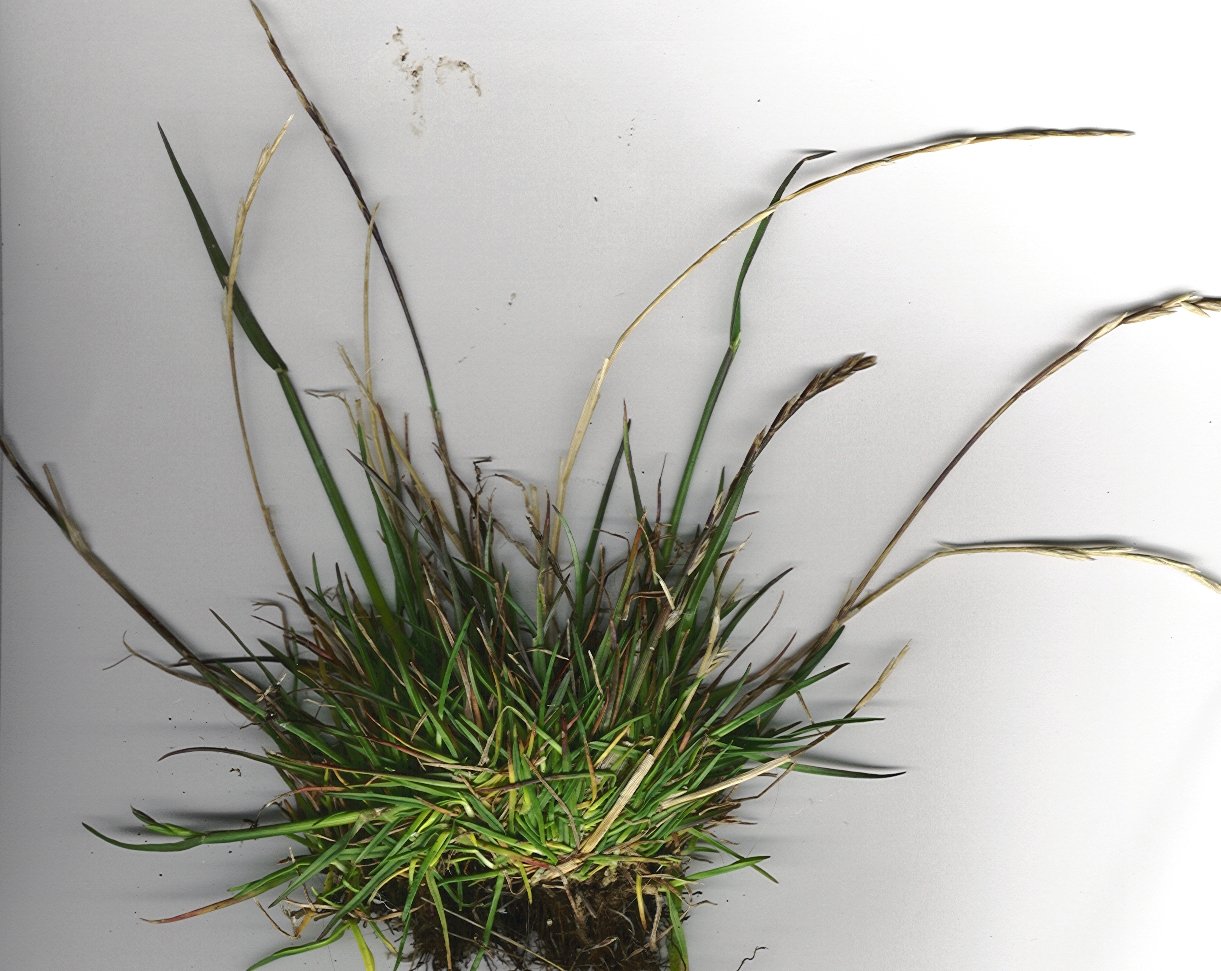- Lolium perenne
Taxobox
name = Ryegrass

image_width = 250px
image_caption = Perennial Ryegrass ("Lolium perenne")
regnum =Plant ae
divisio = Magnoliophyta
classis =Liliopsida
ordo =Poales
familia =Poaceae
genus =Lolium
species = "L. perenne"
binomial = "Lolium perenne"
binomial_authority = L.Perennial Ryegrass ("Lolium perenne") is a
grass from the familyPoaceae . It is native toEurope ,Asia and northernAfrica , but is widely cultivated and naturalised around the world.Description
Perennial ryegrass is a low-growing, tufted, hairless grass, lacking
stolon s orrhizome s. The leaves are dark green, smooth and glossy, with untoothed parallel sides and prominent parallel veins on the upper surface. The leaves are folded lengthwise in bud (unlike the rolled leaves of Italian ryegrass, "Lolium multiflorum ") with a strong central keel. Theligule is very short and truncate, often difficult to see, and small white auricles grip the stem at the base of the leaf blade. Leaf sheaths at the base are usually tinged pink.The
inflorescence is unbranched, with spikelets on alternating sides edgeways-on to the stem. Each spikelet has only a single glume, on the side away from the stem, and multiple fertile florets without awns. Perennial ryegrass has a fibrous root system, with thick main roots and thinner lateral branches. Roots are usuallyarbuscular mycorrhiza l.Cultivation and uses
Perennial ryegrass is an important pasture and forage plant, and is used in many pasture seed mixes. In fertile soil it produces a high grass yield, and in Britain and Ireland is frequently sown for short-term ley grassland, often with red or white
clover (Trifolium ).In Britain, it is also used as an indicator of non-species rich grassland, as it out-competes the more rare plants and grasses, especially in fertile soils.
Agri-environment scheme such as theCountryside Stewardship Scheme ,Environmentally Sensitive Areas Scheme , andEnvironmental Stewardship give funding to species rich grasslands that does not have an abundance of ryegrass.Selected seed mixes are used extensively for sports pitches, especially winter sports in temperate climates, because of its wear resistance and its ability to regenerate. It is commonly used in the southwest United States to overseed winter lawns. Bermudagrass is a typical summertime grass in states like Arizona, since it is able to withstand the high temperatures. However, Bermudagrass goes dormant during the cooler winter months. Rather than have brown lawns, many homeowners, public areas, and golf courses overseed these lawns with Perennial Ryegrass in early- to mid- September.
Turf-type Perennial Ryegrass can be grown as a permanent home lawn in the US, however, its adaptation range is limited to areas with mild winters and summers. Full sun to light shade, good yearly rainfall, and proper fertilization are the key to a successful perennial ryegrass lawn.
Perennial Ryegrass forms a very dense, dark green, fine bladed turf with the proper maintenance, and it can be successfully grown as a permanent lawn as far south as the lower transition zone - from North Carolina west to northern California.
Yearly overseeding might be needed to replace damaged grass caused by excesive heat during the summer. Maximum daytime temperature should not reach 90 F on a regular basis. Night time temperatures should hover around 68 F or less.
eed Germination
Perennial Ryegrass germinate at or near the soil surface, where water potential can fluctuate widely. It should be seeded in early Autumn (September/October) in Europe in order to benefit from rainy and mild conditions. It takes between 7-14 days for the seed to germinate and a further eight weeks to establish.
Gallery
ee also
Wikimedia Foundation. 2010.
